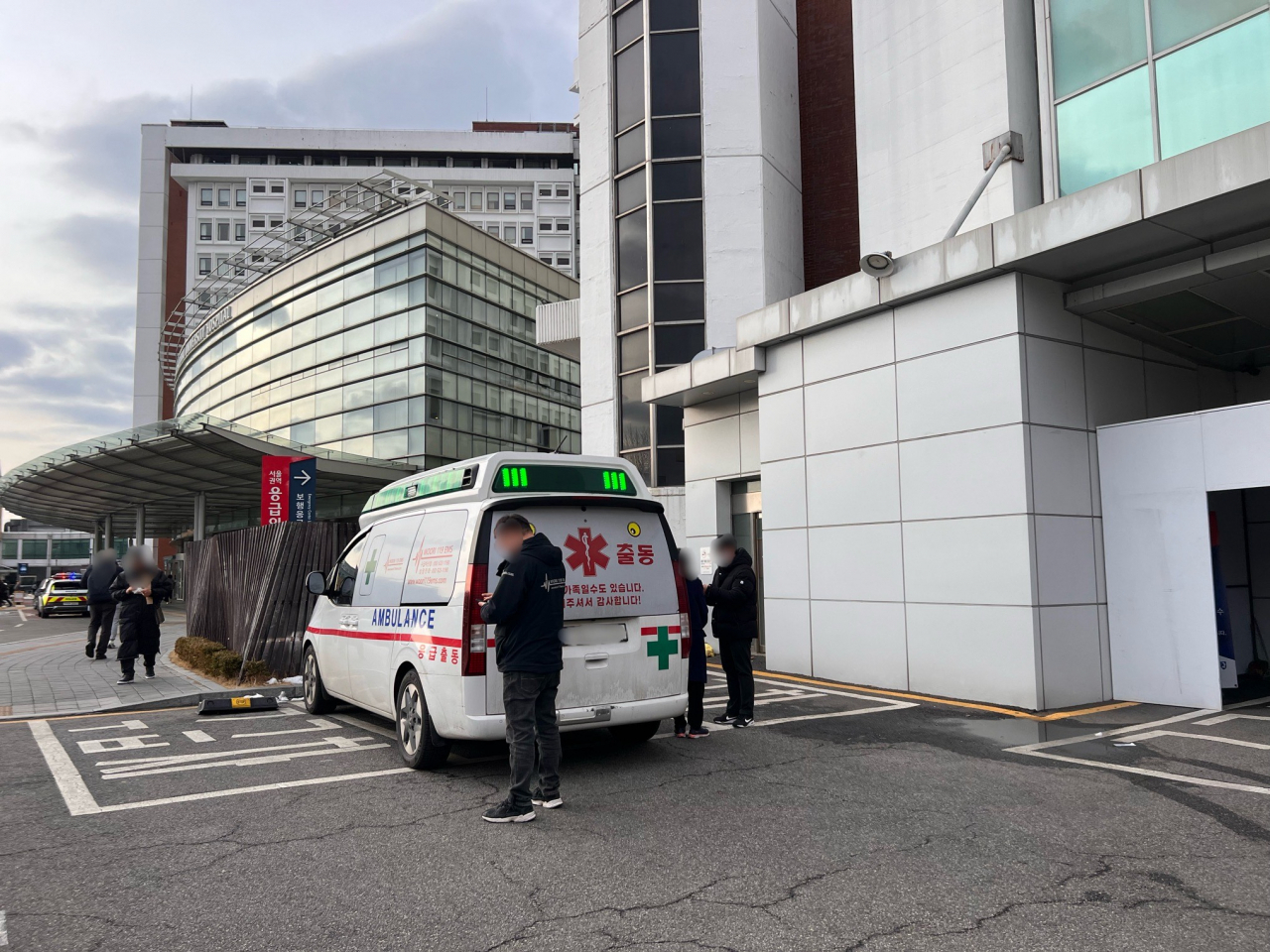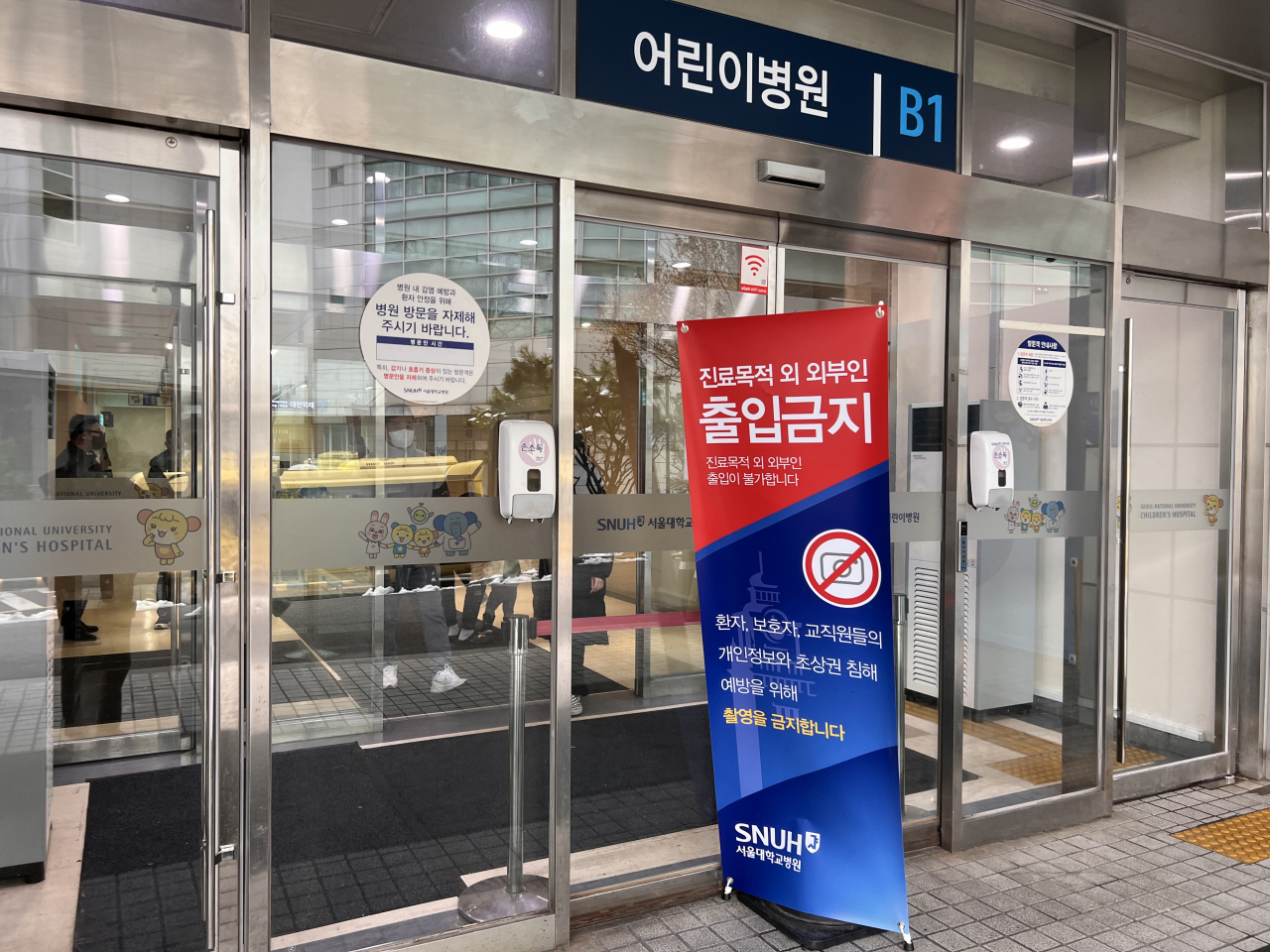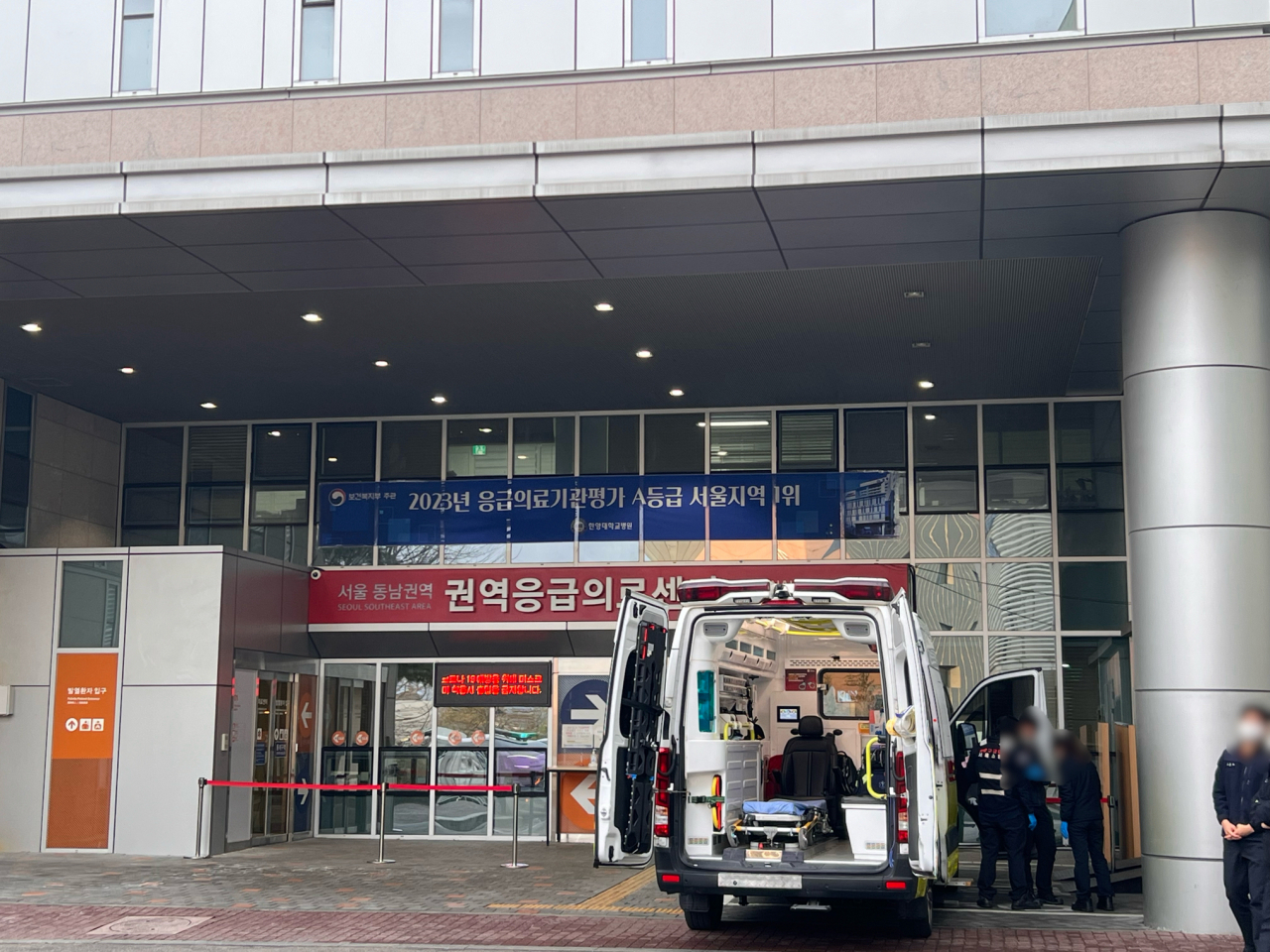 |
A woman and 119 paramedics wait in front of the ambulance at Seoul National University Hospital in Jongno-gu, central Seoul, Friday. (Park Jun-hee/The Korea Herald) |
Kim, a mother in her 30s, arrived at Seoul National University Hospital’s emergency room on 5 a.m., Friday, after her preschool son’s temperature surged at midnight and he was losing energy. But she was not able to meet a doctor until 3 p.m., after almost 12 hours waiting on a bench outside of the ER with her crying son.
“(My son) wasn’t feeling well last night. His temperature went too high, his face got red and he was sweating for days, so ... (I had to come here),” she said.
“It’s frustrating, but we’re not the only ones who are sick."
What usually takes less than an hour was extended to a half-day wait after most of the trainee doctors nationwide threw their gowns away in protest against the government’s drastic hike in the medical school enrollment quota.
A handful of patients were put on never-ending waiting lists for recovery as emergency rooms Friday in Seoul’s major hospitals faced a backlog of patients waiting to get a bed, with some even biding their time on ambulance stretchers, a week after intern and resident doctors collectively walked out of their jobs.
 |
People wait inside the Pediatric Emergency Center at Seoul National University Hospital in Jongno-gu, central Seoul, Friday. (Park Jun-hee/The Korea Herald) |
To fill in the medical gaps, professors, fellows and even nurses are stepping in to treat outpatients, as well as manage and take care of inpatients.
The gap is likely to widen starting this week as resident doctors are reportedly refusing to renew their contracts with training hospitals amid continued warnings from the government that they could face legal action if they fail to return to their workplaces.
With no signs of the health crisis ebbing anytime soon, medical personnel in the emergency department were also busy coping with fatigue. Giving a tired look, some wolfed down their burgers in front of the hospital to avoid the smell of food in dense rooms.
A few minutes later, medical personnel clad in blue scrubs said, “I think (the patient) can come in now with (the guardian),” as he escorted 119 paramedics and a 60-something man on a stretcher into the hallways of the ER at Seoul National University Hospital.
“Thank you so much,” the patient’s wife said in a trembling voice as she carried her husband’s hospital bag for an overnight stay.
“Emergency rooms are overcrowded (these days) because not all of those in need of (urgent) medical services are admitted. ... I was waiting in hopes that (my husband) would be able to get in because he had a hard time breathing,” she told The Korea Herald as she went into the building.
“(Junior doctors’ absences) are compounding the problem because the number of medical staff that can treat patients is lessening, and they are also overwhelmed and running out of energy,” she said.
The emergency room at Hanyang University Seoul Hospital also grappled with providing adequate care at its fullest amid a shortage of beds and staff, and patients faced hours of uncertainty due to a shortage of hospital bed capacity.
 |
119 paramedics are seen cleaning up the ambulance after escorting a patient into the emergency room at Hanyang University Seoul Hospital in Seongdong-gu, eastern Seoul, Friday. (Park Jun-hee/The Korea Herald) |
A mother of another kindergarten child who visited the ER at Hanyang University Hospital after she found blood in her son’s stool also said she was close to being sent to a secondary hospital but got treated at the last minute.
“Some might think that it’s not a severe illness, but at that moment, I had no choice but to head to the emergency room immediately. Even if I were told to go to a secondary hospital, I would’ve stayed here,” she said.
Amid staffing shortages, intensive care units at big and general hospitals are sending patients to secondary hospitals, which are typically smaller facilities that lack specialized equipment compared to general medical institutions. However, these hospitals are unable to accept patients as they are outlying through lack of beds as well, according to health authorities.
Meanwhile, a total of 10,034 trainee doctors out of some 13,000 -- 80.5 percent of the total -- at 100 training hospitals tendered their resignation letters, while 9,006 of them have left their workplaces as of Friday at 7 p.m., according to Second Vice Health Minister Park Min-soo on Monday. The hospitals have not yet accepted the resignation letters, he added.







![[Weekender] Korea's traditional sauce culture gains global recognition](http://res.heraldm.com/phpwas/restmb_idxmake.php?idx=644&simg=/content/image/2024/11/21/20241121050153_0.jpg)